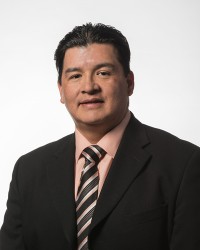Article Origin
Volume
Issue
Year
The $3 million recently allocated by the provincial government to meet First Nations and Metis education goals, established by a joint task force on Aboriginal education, will be equalled in 2014-2015.
“In the new fiscal year there will be a new $3 million in place … certainly recognizing that the joint task force talked about an ongoing response and that will absolutely be part of the discussions moving forward,” said Greg Miller, assistant deputy minister with Saskatchewan Education.
Bobby Cameron, vice-chief and education portfolio holder for the Federation of Saskatchewan Indian Nations, said this money, the largest amount to date that the province has announced in one-shot to address Aboriginal education, is only the start of what is needed.
“The $3 million that they invested is something, but we still have a long ways ahead of us in terms of making sure our First Nations students are on par in terms of graduation rates and employment rates and all that other good stuff,” he said.
However, both Cameron and Miller are adamant that provincial dollars going directly to on-reserve schools do not mean the federal government can relinquish its responsibility.
“I’ve already heard that maybe these program dollars are a way of off-loading the federal responsibility to the province,” said Cameron, “but the focus for FSIN … will always be the treaty and inherent right to education.” Those treaties were signed with the Crown.
First Nations organizations have long claimed that the federal government funds on-reserve students at a much lower rate than their provincial counterparts.
Miller sees the money his government gives to on-reserve students as a way to support all Saskatchewan students.
“The federal government is still responsible for funding on-reserve schools. What we’re doing here is to continue to develop partnership between provincial schools and First Nations to offer programming and support for Saskatchewan students,” he said. “We’re really trying to take this from a student-first perspective.”
Miller adds that the province will continue its dialogue with its federal counterparts to address the “support of students in federal schools.” He also says the province will not be putting money into capital projects on-reserve.
Cameron said the FSIN will continue to talk to Canada’s Aboriginal Affairs Minister Bernard Valcourt, addressing concerns with the First Nations Education Act.
“We need a commitment in writing from the federal government and the Treasury Board of Canada saying here is what our First Nations students in Canada are going to get per year ….We need to see in writing, as well the commitment that each chief and council, along with their band membership, have full control and authority and jurisdiction when it comes to the on-reserve school system,” he said.
FSIN is lobbying for an $18,000 to $20,000 per student commitment from the federal government.
Of the money recently allocated by the province, half will be used for an Invitational Shared Services initiative to provide students and teachers in on-reserve schools with the same supports available in provincial schools. The other half will expand the Help Me Tell My Story program, which will re-engage parents and Elders in the oral language development and education of children.
Culture and language remain high priorities with First Nations, something that was recognized among the recommendations included in the joint task force’s final report, which was submitted April 2013.
Late last year, the province began taking action in response to the task force’s recommendations, which included increasing Adult Basic Education spaces, expanding child care and pre-kindergarten spaces, and ensuring driver education is available to on-reserve high school students. The government is also working with the FSIN to support the costs for First Nations’ schools to access the provincial pre-kindergarten to Grade 12 Microsoft Licensing Agreement.
Moving forward the allocation of the new $3 million will be determined in partnership with First Nations organizations and provincial schools, said Miller.
“This is just the tip of the iceberg and we’re certainly pushing for more action in terms of program dollars being committed to our First Nation students and reserves across Saskatchewan,” said Cameron.
The provincial government also announced in January that it was investing $50 million into First Nations and Métis post-secondary education and training through 2013-14.
- 2760 views

